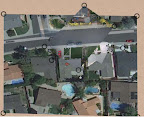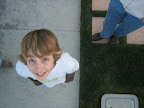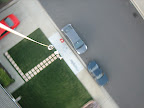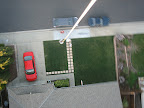GrassrootsMappingBelizeMarch10
(copied from Pat Coyle's entries in the Grassroots Mapping Wiki)
On March 10th, we did another balloon test flight in the front yard. Neighbors stopped by and enjoyed it.
I tried the the Cartagen hand-warper by Jeff Warren and the team running now at:
on a few of my test flight photos using the 'drag' tool and double-clicking an image to make it transparent. Very neat! My operator skill (lack of ;->) and use of these detailed photos makes for somewhat blurry edged ties.
 |
| From BAP test 3-10-10 |
 |
| From BAP test 3-10-10 |
 |
| From BAP test 3-10-10 |
 |
| From BAP test 3-10-10 |
 |
| From BAP test 3-10-10 |
 |
| From BAP test 3-10-10 |
Observations:
Reinflated balloon used on earlier test and added a second balloon. Rate of rise was initially modest in light winds which tended to move the balloons and rig horizontally.
The script/camera stopped again repeatedly, so still not good. I still don't know if there is something about the Canon Elph SD400 that is the problem or if it is the script. The test included several pull downs to restart the script and relaunch (An update on this issue: I did a few tests with the SD 400 and the 3 batteries I have. They vary in manufacturer and age from one acquired in January, to one marked 2/07, to another of unknown age, but presumably older. I need to collate the data, but the number of exposures and early stop appears to be sensitive to battery charge – duh. However, I had not been paying attention to this in my test flights. However, once I put fully charged batteries in, in ground-tests I got exposure counts of: 299,237, 289, 378, 262, 301, 279, 316, 303. The script ran till the battery was near zero %, then stopped. In some cases there was enough battery left to power up the camera and erase the images, in other cases the message “change battery pack” came up and the camera turned off. At 10 second intervals, these range from ~44 to 63 minutes, for very usable flight durations. These were in conditions where the flash activated every shot. I tried turning the flash off, but in script mode this was overridden. With it off, presumably one would get even higher numbers of photos. The three batteries vary in age and the initial max % shown in battery indicator varied from: ~45, to 75, to 91%. There does appear to be an initial problem in a few of the tests where the script stopped at 1 or up to 33 exposures. However, my quick takeaway is that I can get very useable durations if I ensure the batteries are fully charged and strong enough that they have a reasonable % max battery indication, e. g., not too old, so don’t take full charge. It may be prudent to take a few images, maybe up to 30, ~5 minutes, before launch to mitigate the early stop failure mode. However, for the high percentage fully-charged batteries this did not appear to be an issue.).
Again, the bungee cord and wrist strap attachment made it pretty easy to lower the camera from the soda-bottle to restart the script and snug it back up for launch.
Toward the end of the test, it was less windy with one ascent sequence that was close to vertical (see photos on this page).
The photo set is at: test